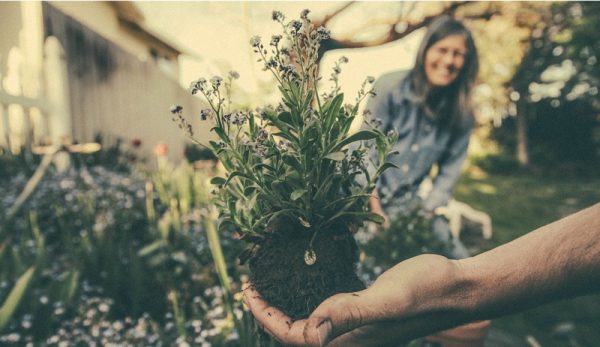
As winter wraps our land in a cold blanket, and the new year brings in a feeling of what comes next, we need to look inward and find the core of our vision for our properties.
Having a vision for your property is so important. There is nothing like knowing where you want to go to ensure you actually get there!
Although you will change your mind and your goals along the way, you will always have a vision to bounce new ideas against and to help inform your decision-making.
A vision with a plan—a holistic goal—is like a foundation for a house. Because you really can’t build without the strong roots of a plan for where you want to go.
Holistic Goal
First, let’s define a holistic goal. Start by asking yourself:
- Can you discover weak links in your vision?
- What are the strong points of your plan?
A holistic goal is a series of statements that you brainstorm, write down and revise. Eventually, you’ll also want to type them up, print your list out and put it on your fridge. These statements should be specific and help you, as a grower, connect yourself, your land and community into a long-term plan.
The following questions can help get your mind working on a solid vision for your property.
Read more: These 5 farm resolutions will help you start strong in 2021.
1. What is the life I want to live?
We all have different visions for our property. So go ahead and define yours clearly now.
Write a clear statement of the life you want to live in conjunction to your land. Consider the following:
- Do you want an extra garden income?
- Are abundant, year-round blooms important to you?
- Do you want food security?
It is important to make clear statements about the life you want to live and be detailed. A holistic goal includes these clear statements and also helps ground your entire vision.
Here are a few example statements to to use as a jumping-off point.
- “I want to live surrounded by fruit, berries and herbs and be able to enjoy the bounty in-season. But I also want to be free in the winter to travel, so I don’t plan on having livestock.”
- “I want to live surrounded by fruit, berries and herbs and be able to enjoy the bounty in season. But I want to be free in the winter to travel, so I will find a friend or hired hand to care for the livestock I would like to eventually include in my plan.”
2. How does my land support this?
Be site-suitable, and brainstorm how your designs and plan work on your piece of land.
We should not force unsuitable projects or plants onto our land, our environment or our climate. Consider your environment, your hardiness zone, your urban or rural context when you build your vision.
Saying you will grow all your own food on a small urban lot isn’t practical. Furthermore, assuming your soil is suitable to every vegetable is an uphill battle not worth fighting. So focus and succeed with site-suitable planting.
Key questions include:
- What is your hardiness zone?
- Do you know your soil type?
- What is your sun access?
- Is there a prevalent pest issue?
- What is your most pervasive weed?
3. How does my community support this?
Be aware of your social capital and social obstacles.
Your community is all around you, and your projects and production should harmonize with your community. If you plan on having a garden business, find out what people want to eat and buy.
If you are considering chickens, bees or composting, consider your neighbors, by-laws and willingness to make a stand (or fly under the radar). We must always consider our community in our vision and plan. So look for both the positives and the ways your community could present obstacles to your goals.
Key questions include:
- Who are your neighbors?
- How do they feel about gardens, chickens or bees?
- Who are your allies and potential trade partners? (Ideally, you won’t need to grow everything but can access good local foods and be part of a food secure community.)
- What is your municipal zoning and restrictions?
Read more: Increase your community’s food security with these 6 key ideas.
Plan for Your Goals
A holistic goal can help growers find a balance between their personal goals, what their land is capable of, and how they can support and be supported by their community.
Goals serve as sounding blocks for decision making. They help you clarify exactly what life you want to live, site-suitable crops you can grow and potential community support.
You, your land and your community are the three pillars of success!
Grow On,
Zach




